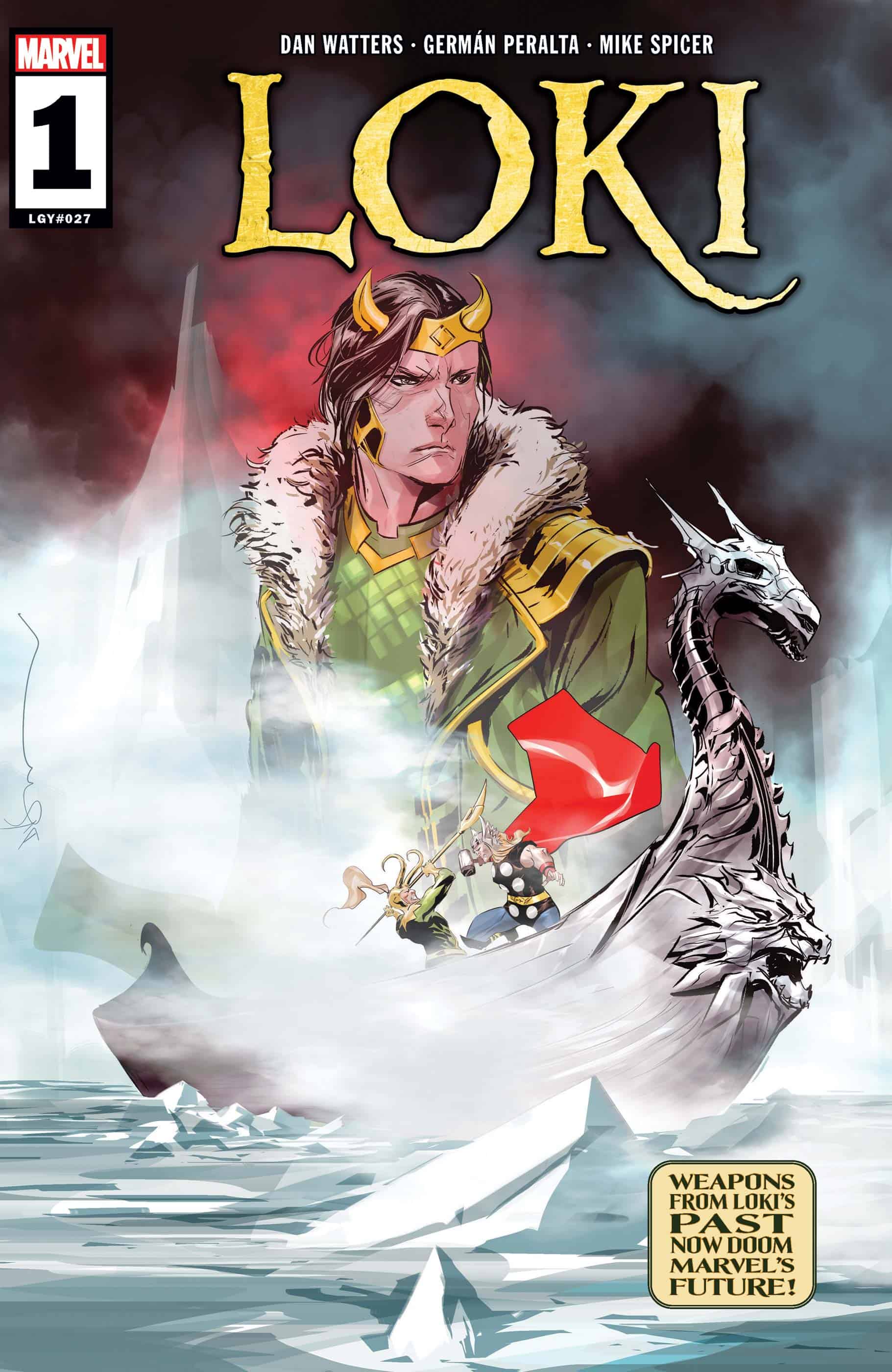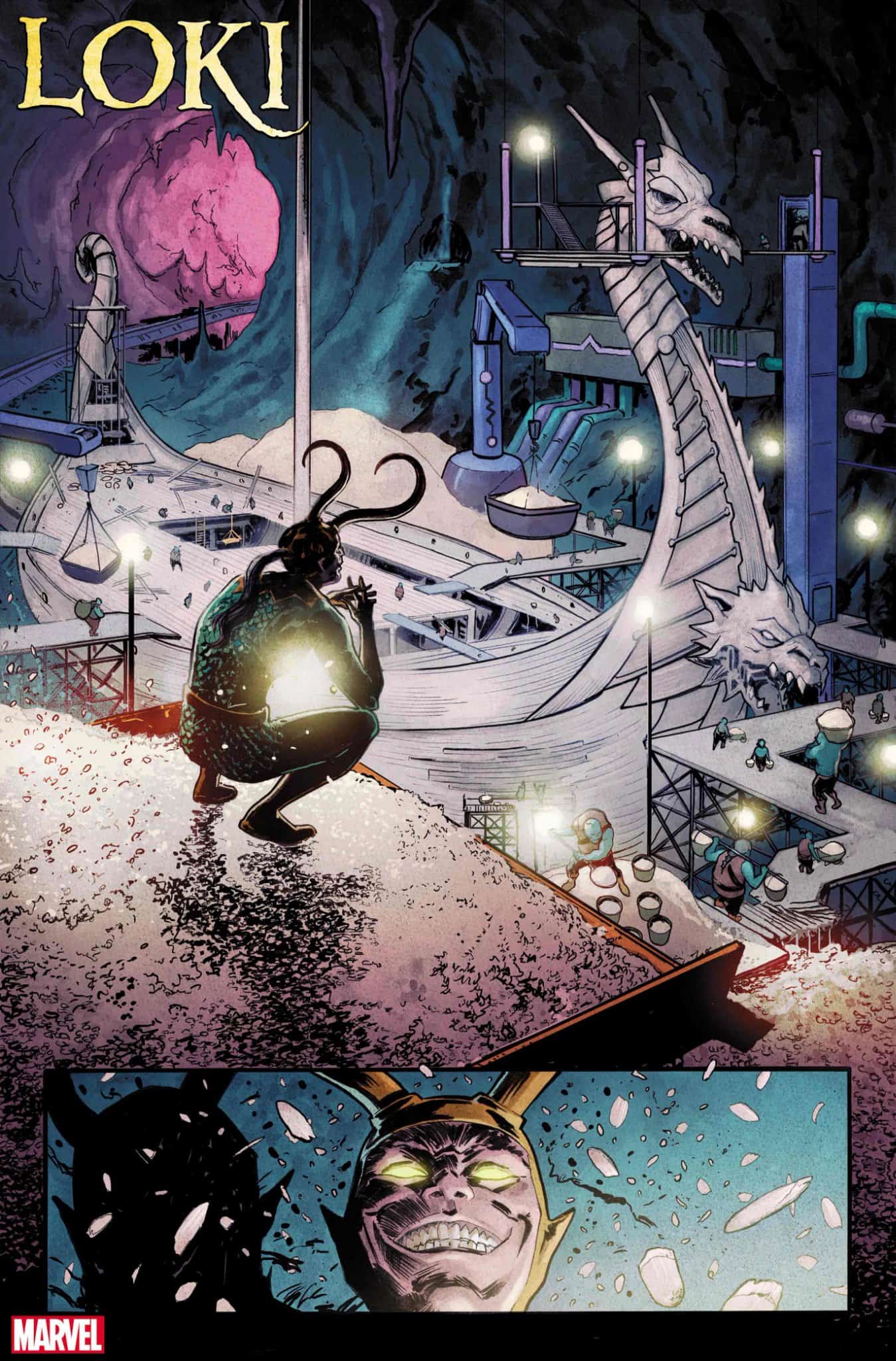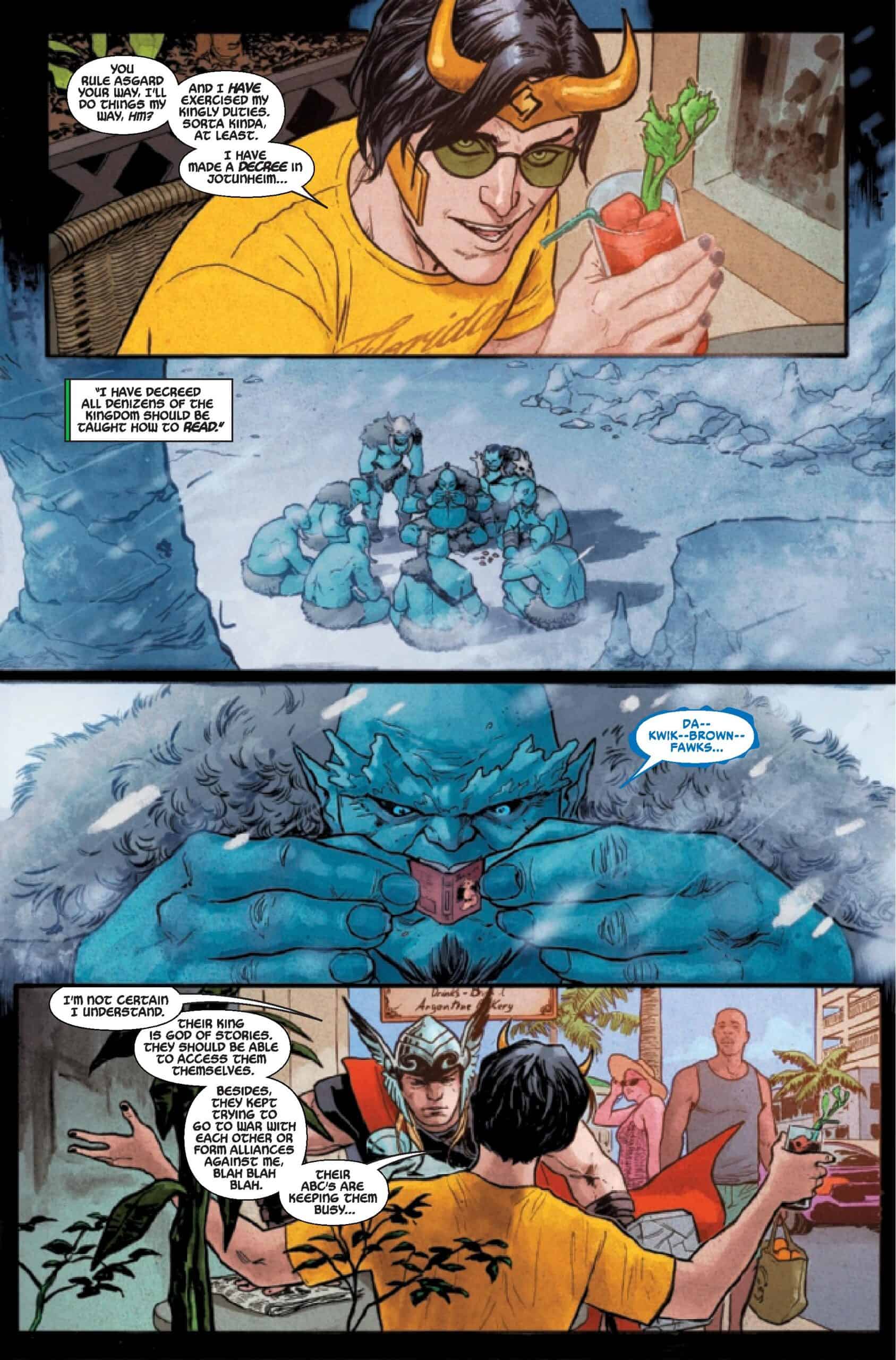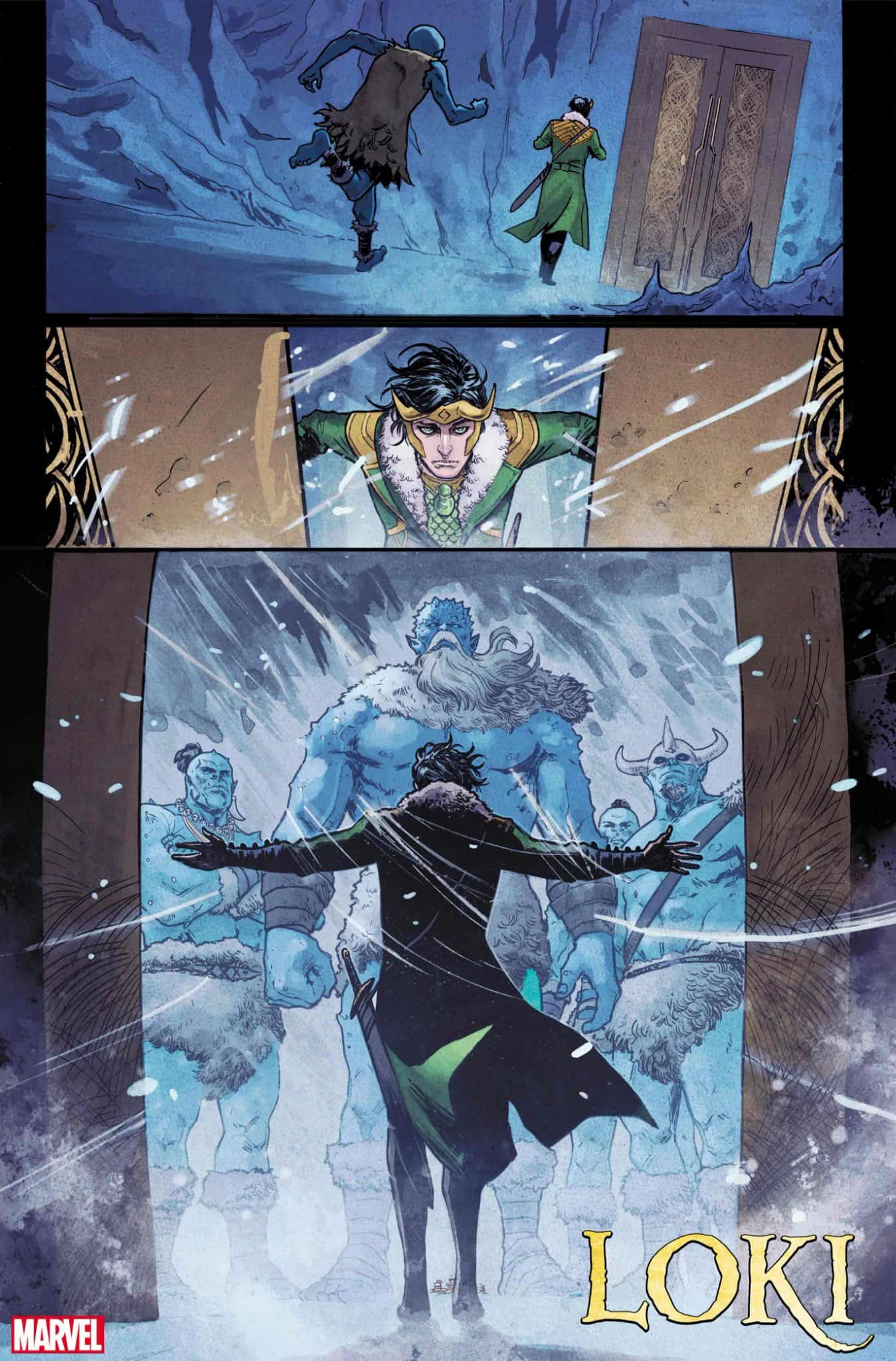Loki #1

Recap
Loki is king of Jotunheim now, but the accompanying boredom - for Loki, at least - inevitably breeds mischief. Loki may no longer be a villain or the God of Lies, but with Loki, trouble is never far behind. And it's usually Loki's fault. It's an all-new adventure, but some things never change.
Review
Every few years, like clockwork, Marvel launches a new Loki comic–often hoping to capture fans of the MCU iteration. With a new series of the Disney+ Loki show around the corner, the time is upon us once more. Within the opening pages, we’re treated to a glimpse of Norse death rites and introduced to Naglfar: a mythological ship made by Loki from the fingernails and toenails of the dead, but we also see Loki faffing about in Florida being “Florida man.” Dan Watters’ writing is often haunting, as readers of his other works may expect, but his Marvel debut is mixed with a great deal of humor. In this regard, Watters captures Loki as he exists within the Norse Eddas: part blood-curdling foe, part comic relief sidekick. And as with Norse mythology, the newest Loki miniseries follows its protagonist as he cleans up a mess that’s entirely his fault.

As explained by the comic’s description, the miniseries is set to follow Loki as he gathers a bunch of magical artifacts scattered through the Marvel universe before they fall into the wrong hands. This plot beat, of a character collecting magical artifacts, has been reused extensively in comics, films, and video games. And while it feels formulaic, Watters still breathes some life into it. While Watters beautifully captures the spirit of Loki and previous Loki comics, he makes several departures for better and worse. Most noticeably, Loki #1 isn’t narrated by Loki but by a third party. As readers will see, Watters’ choice of narrator is clever and chilling. However, it diminishes Loki’s role as a narrator even while the comic foregrounds Loki’s self-made role of God of Stories. This “God of Stories” focus ignores Loki’s choice in the 2019 series to become the God of Outsiders instead. Simultaneously, it draws attention to an aspect of Loki: Agent of Asgard (in which Loki became God of Stories), which is being left out: Loki’s genderfluidity.

As I’ve noted elsewhere, Loki’s genderfluidity has been ignored by the last three Thor writers (Jason Aaron, Donny Cates, and Torunn Grønbekk) and mentioned minimally in the 2019 Loki series. The representation that feels incredibly significant to genderfluid readers like me has been fundamentally erased. It was similarly erased in the Disney+ series. In Loki #1, Loki is exclusively masculine-presenting and exclusively referred to with “he/him” pronouns (though both “she/hers” and “they/them” have been used for Loki in other comics). And while I don’t believe Loki’s queerness needs to be the focus at all times, its general absence from the introductory issue of a comic focused on a queer character–released in Pride Month, no less–feels noticeable. For now, the only place the series shows a female-presenting Loki is on Artgerm’s “Lady Loki” variant cover (with a costume that has some transmisogynistic connotations). Watters showed he is more than capable of writing complex queer characters in The Picture of Everything Else, and I can only hope we get a glimpse of that in a future Loki issue.

Artistically speaking, Loki #1 is a delight. Every panel of Germán Peralta’s artwork feels carefully crafted for the maximum emotional impact, whether the haunting construction of Naglfar or the visual comedy of a frost giant holding a tiny copy of Illustrated Norse Myths for Children. (The same can’t be said for Dustin Nguyen, whose digital cover art looks like a hasty, half-hearted sketch, especially compared to his typical watercolor work.) Peralta captures the immensity of gods and giants without sacrificing intimacy. His Loki is energetic, charming, and sometimes terrifying (which Peralta sometimes conveys in hands and body language alone). Colorist Mike Spicer adds great depth to Peralta’s already memorable but visually complex compositions with rich, vibrant colors and gritty watercolor textures. Every scene feels visually distinct, whether it’s a menacing cavern, the sunny streets of Florida, or the frosty blues of Jotunheim, but the comic has a clear visual identity that means none of these scenes changes ever feel more jarring than the narrative implies for them to be.

Final Thoughts
Loki #1 effortlessly blends horror and comedy to capture the spirit of Norse mythology. If you can forgive queer erasure and a formulaic plot, spellbinding art and storytelling make it worth the read.
Loki #1: Florida Man
- Writing - 9/109/10
- Storyline - 7.5/107.5/10
- Art - 10/1010/10
- Color - 10/1010/10
- Cover Art - 5.5/105.5/10




